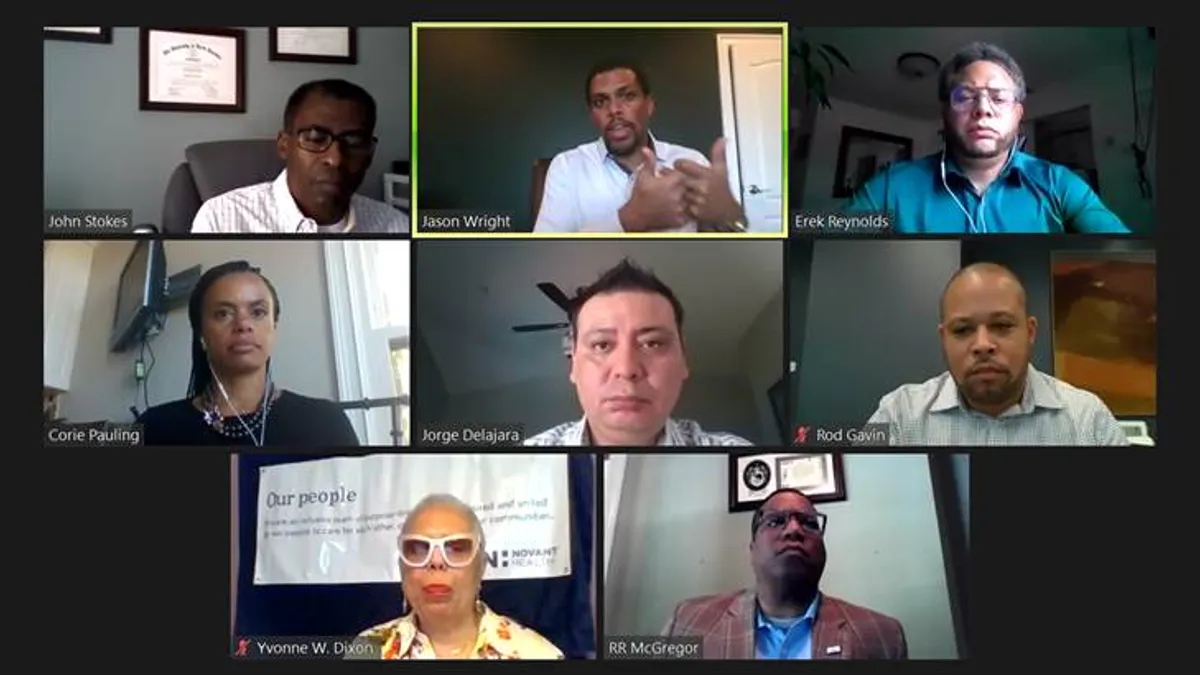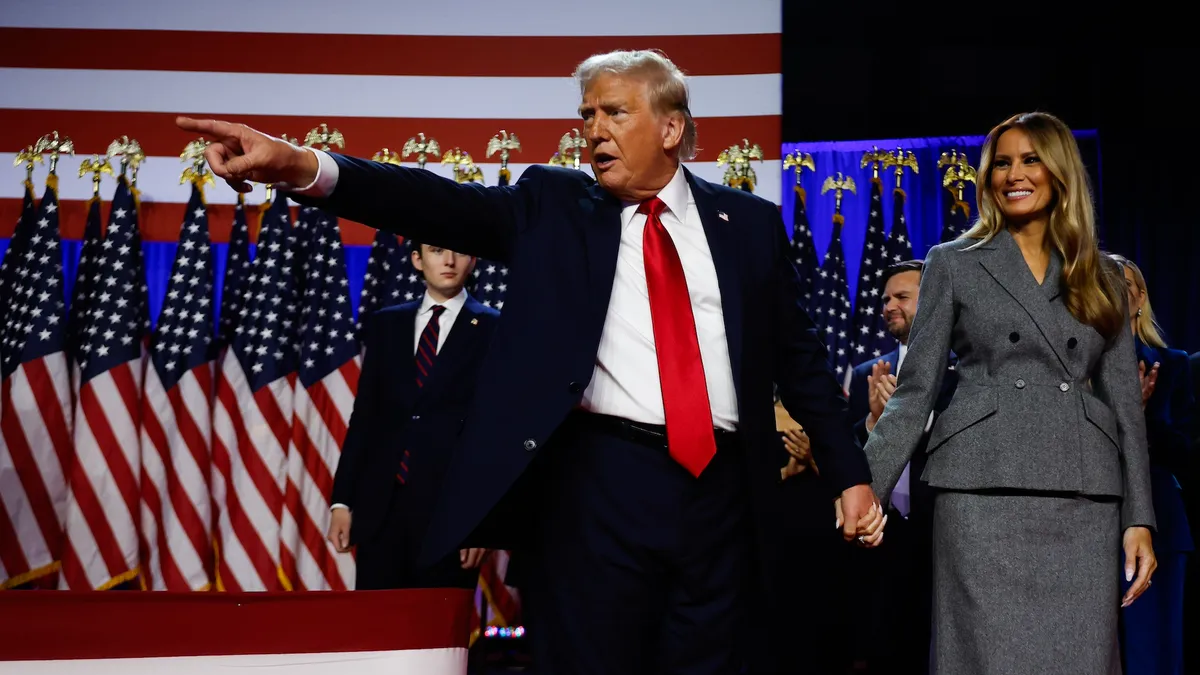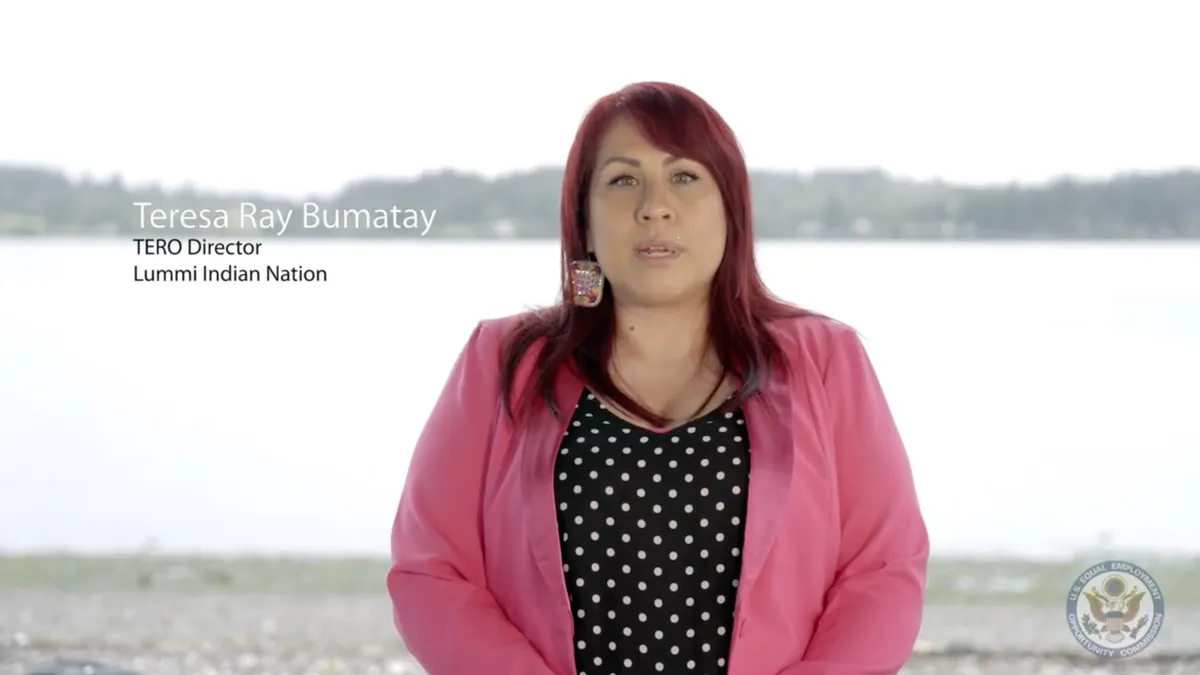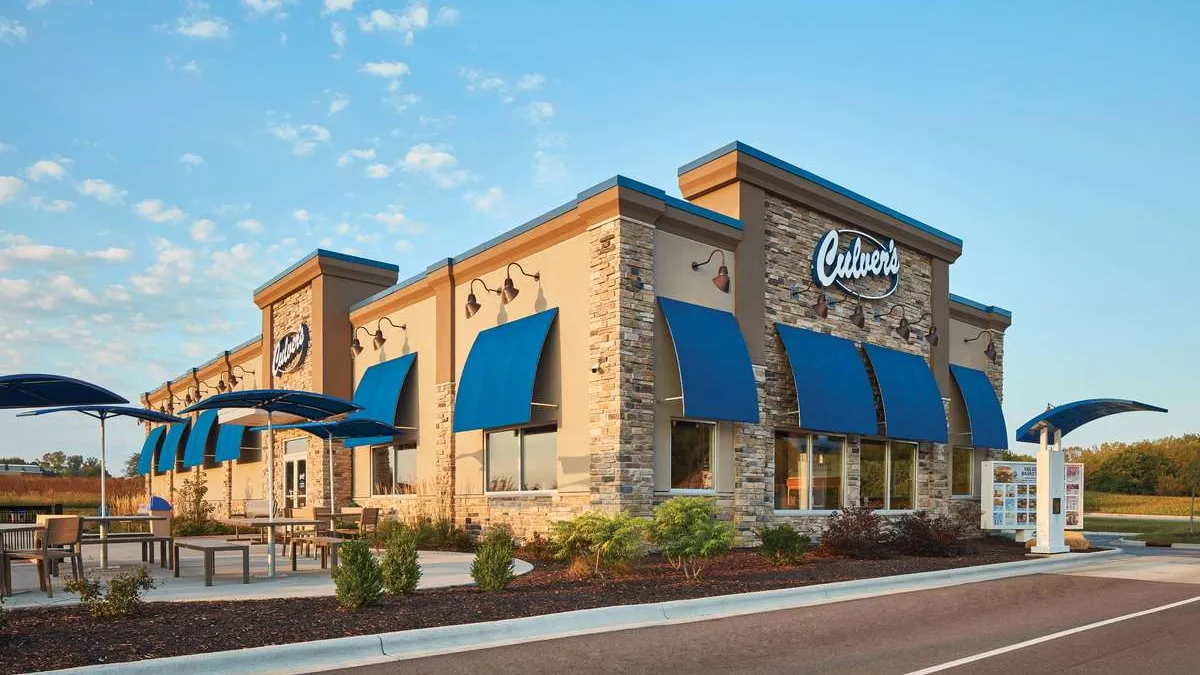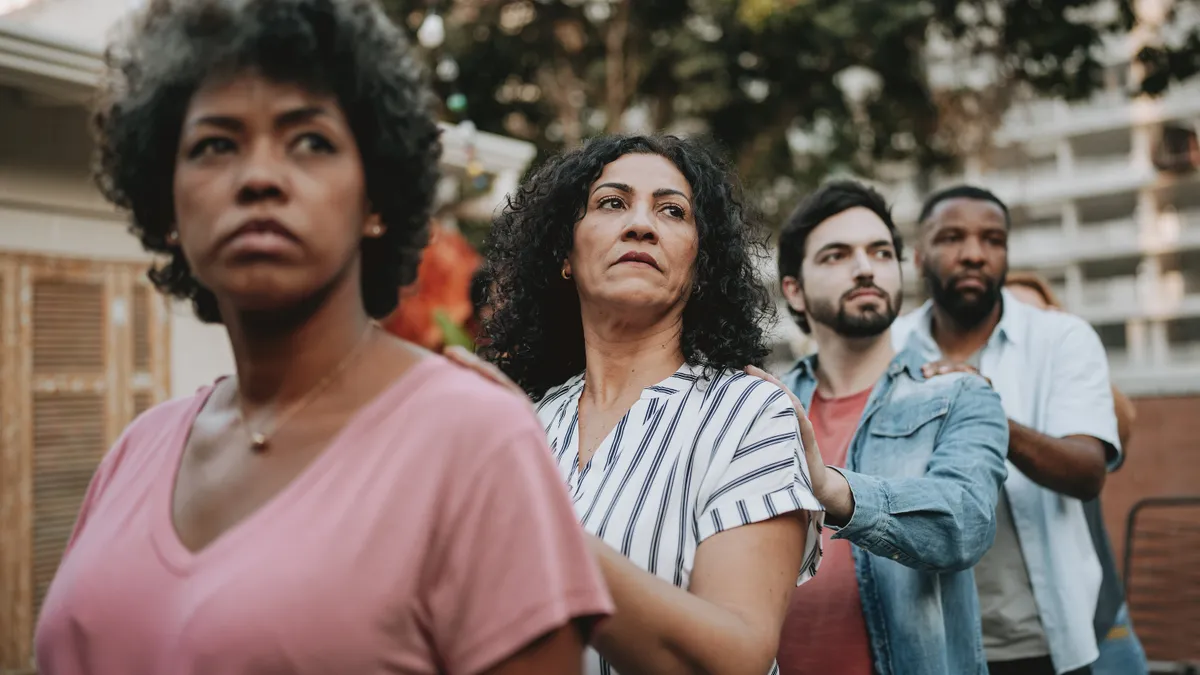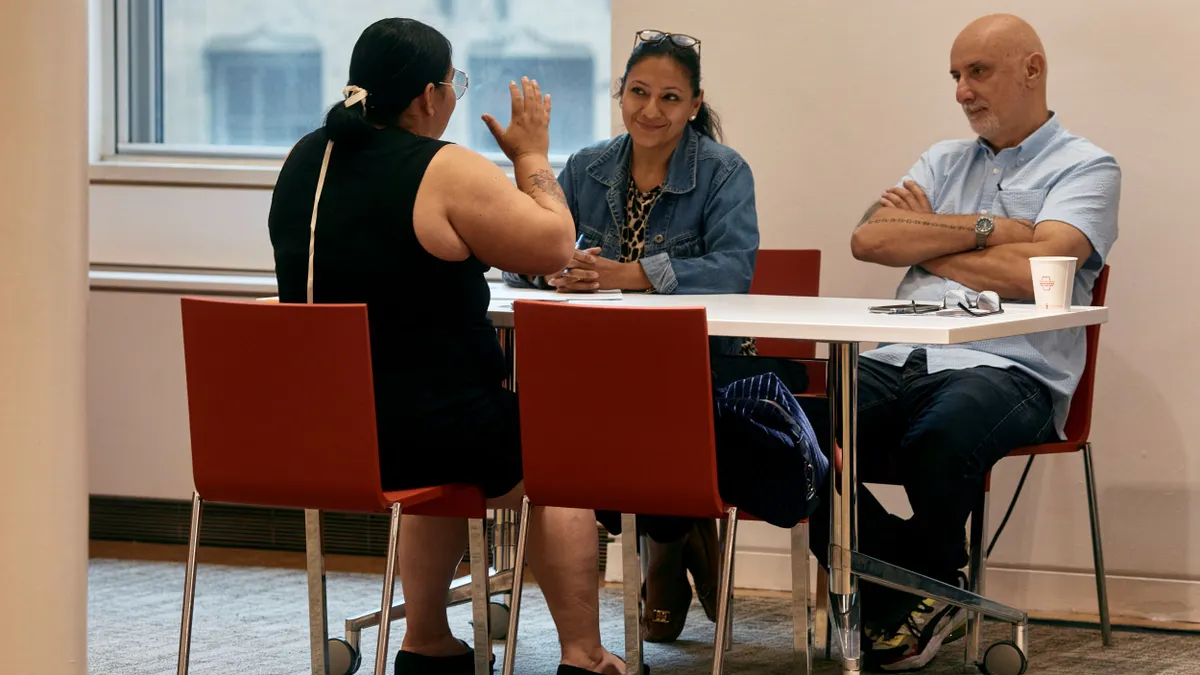As companies respond to the COVID-19 pandemic and take a stand against racial inequality, along with analyzing diversity and inclusion practices internally, there's a focus on supporting the inclusive growth of the communities they serve, according to experts. Senior leaders at McKinsey & Company, Lowe's, Truist and the Charlotte Regional Business Alliance joined a virtual Charlotte corporate community roundtable hosted by TIAA and Novant Health July 28 to share best practices.
Approaching inclusive economic growth in a community context is vital for companies to address the root causes of racial disparities not only in Charlotte, North Carolina, but also in cities across the U.S., according to Jason Wright, a partner at consulting firm McKinsey and former NFL player. The economic crisis caused by the COVID-19 pandemic highlights an existing racial wealth gap, said Wright, who moderated the discussion. The total wealth of the average Black American family is $17,600, which is about one-tenth the wealth of the average White American family — $171,000, according to research by the Federal Reserve highlighted by McKinsey.
"If we were to close the racial wealth gap, it's worth between $1 and $1.5 trillion dollars annually to the U.S. economy," Wright said. "That's 4 to 6% of the [gross domestic product]; that's larger than any of the last four economic expansions." If the racial wealth gap remains, it will hamper the country's recovery coming out of the current economic crisis, he said.
"We all do better if that racial wealth gap is closed," Wright said. "The money goes back into all businesses." He led roundtable participants in exchanging ideas and sharing the progress their organizations are making.
Creating health equity
Thinking about inclusive growth in a holistic way requires a focus on health disparities, Wright said. Black Americans "are almost twice as likely to live in the counties at highest risk of health and economic disruption, if or when the pandemic hits those counties," a McKinsey analysis found.
Novant Health, a network of physician clinics, outpatient centers and hospitals headquartered in North Carolina, is "bringing access to service and resources, for the people who have historically been overlooked and underrepresented," Raki McGregor, vice president, consumer operations officer for consumer strategy and products operations, said. "We recognize that racial discrimination limits access to opportunities to social determinants of health and it drives health inequality. A historic approach to creating equity for every person in the community we serve is at the core of our mission."
Internally, both the COVID-19 pandemic, and the "other pandemic of racism," inspired a heightened focus on diversity and inclusion, Yvonne Dixon, director of health equity at Novant Health, said.
Recognizing Juneteenth within the organization, initiating conversations surrounding the Black Lives Matter movement as well as "discussions about George Floyd, what took place and how people were feeling, I would say five years ago, we were not doing that," Dixon said. "We're in the space now of diversity and inclusion and equity. And we're having to constantly remind individuals, not only from the community, but also internally as well because, after all, not everyone is going to get on board with the change at one time." The organization aspires for everyone to be on board, she said.
Bridging the digital divide
If Black and Latino individuals have access to broadband internet or personal computers, the ability to thrive economically increases, according to Wright.
To help bridge the equity gap created by the digital divide, TIAA, a financial service organization, partnered with the nonprofit EveryoneOn for the Be Active for Access program. The goal is to provide internet access and affordable internet service to low-income families in need, according to Corie Pauling, chief inclusion and diversity officer and head of corporate social responsibility. TIAA's community outreach also includes examining public policies, Pauling said.
"The economic disparities that the Black community continues to face are just breathtaking," she said. "We are looking at how we can partner with our TIAA institute on more public policy studies." The organization also intends to engage with its client base that includes universities and colleges to introduce a curriculum covering financial literacy and combating student debt, she said.
Internally at TIAA, "talent development and mobility is a space where we are doing some new things, and looking strategically at new disciplines we are going to be employing," Pauling said.
"Be the Change is our enterprise platform that's really taken off, and will be our sustained focus. We have a strategic plan that goes to May of 2021 because we want people to know we don't see this as a moment; it's a movement." The Be the Change initiative, supported by TIAA President and CEO Roger Ferguson, has a shared purpose for everyone in the organization to work toward progress against racial inequality and structural racism, Pauling said.
Enhancing supplier diversity
It's important to ensure "your vendor pipeline, whether you're a business or the government, is truly sufficiently diverse," Wright said. He suggested conducting research to make certain the businesses are actually "Black women and minority owned in a robust way," and employing people of color, he said.
Amid the pandemic, Lowe's, headquartered in Mooresville, North Carolina, is focusing on supplier diversity and providing minority small business grants, Jorge De La Jara, global senior director of culture and diversity and inclusion at Lowe's, said. "The company has given over $25 million dollars toward diverse, small businesses," De La Jara said. "We're adding another $25 million dollars for rural businesses as well."
"When we think about diversity and inclusion, we think about it being a humanity issue," he said. "We are interconnected. Our actions matter."
He continued, "At Lowe's, we have three areas that we talk about — talent, culture and business. We have created practices like training on unconscious bias for our people leaders and for our associates." His role includes working with the talent acquisition team to "train leaders on how to counteract disparities as we develop talent," he said. Following the killing of Floyd, Lowe's President and CEO Marvin Ellison has had "town hall meetings to talk about the impact of equality," De La Jara said.
Ellison and TIAA's Ferguson are two of the few Black male leaders of Fortune 500 companies, De La Jara said. After Jide Zeitlin stepped down as chairman and CEO of Tapestry in July, Black male leaders now comprise less than 1% of CEOs in the Fortune 500.
"How can we have more?" De La Jara said. It's a privilege to have a CEO that is dedicated to moving the needle forward in regard to diversity and inclusion, he said.
John Stokes, director health equity at Truist, formerly BB&T, also highlighted supplier diversity.
"As a part of our merger, we created a community benefits plan that provides $60 million dollars over three years to the community, affordable housing and supplier diversity to build new branches in low-to-moderate income areas," Stokes said. However, "if you're giving money and you don't have the policy change behind it, sometimes it falls flat," he added.
The company had "difficult conversations internally" on the historical perspective of racial injustice, Stokes said. And, along with Truist's "lines of business creating diversity strategies," it offers unconscious bias training and encourages joining a business resource group outside an employee's own culture or ethnicity "to get a different perspective," he said. "We also have to be intentional about sponsors and mentors," he added.
A movement, not a moment
The group of senior leaders said that inclusive growth is a movement, not a moment, and they plan on continuing to discuss best practices together. "I know this group will remain connected to really push the needle," De La Jara said.
Wright asked Rod Garvin, executive director of the CLT Alliance Foundation and Charlotte Regional Business Alliance, what he hoped the group participating in the roundtable accomplishes. "We represent 2,000 or more businesses," and the majority of those are small or midsize, Garvin said. "We see our role as helping to aggregate all these great strategies as practices and opportunities in a way that's accessible to business leaders and organizations of all sizes," he explained.
"Large companies have a very important role," he continued, "but the majority of our people and employees actually do work for small and mid-sized companies. They absolutely have to be part of the equation."



